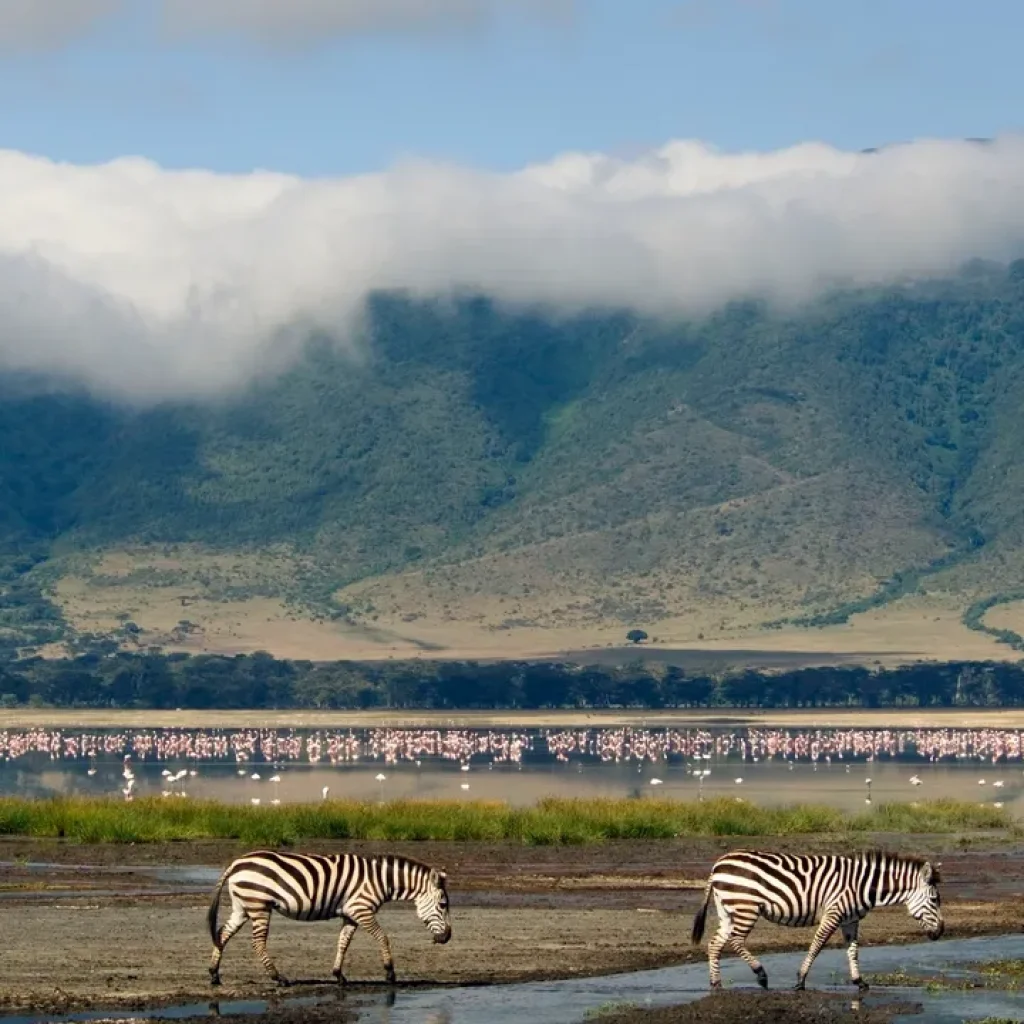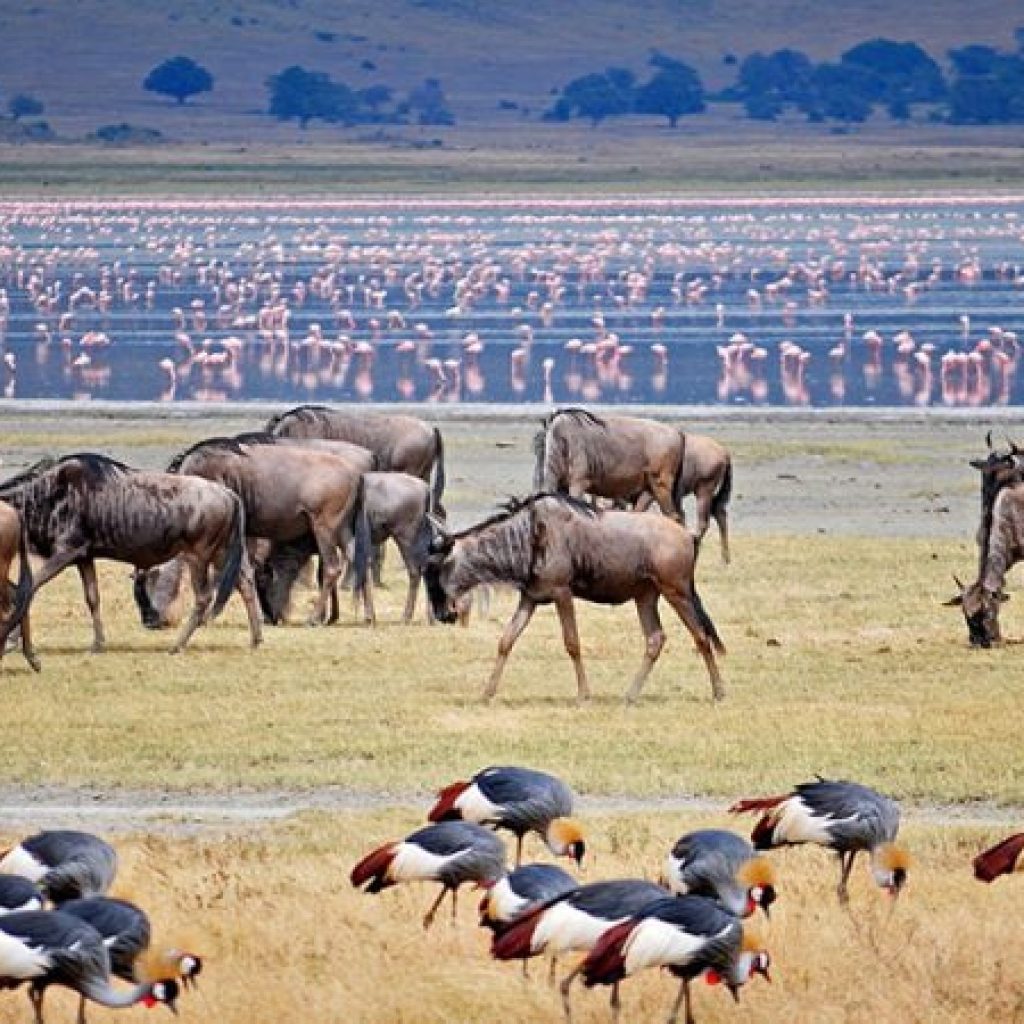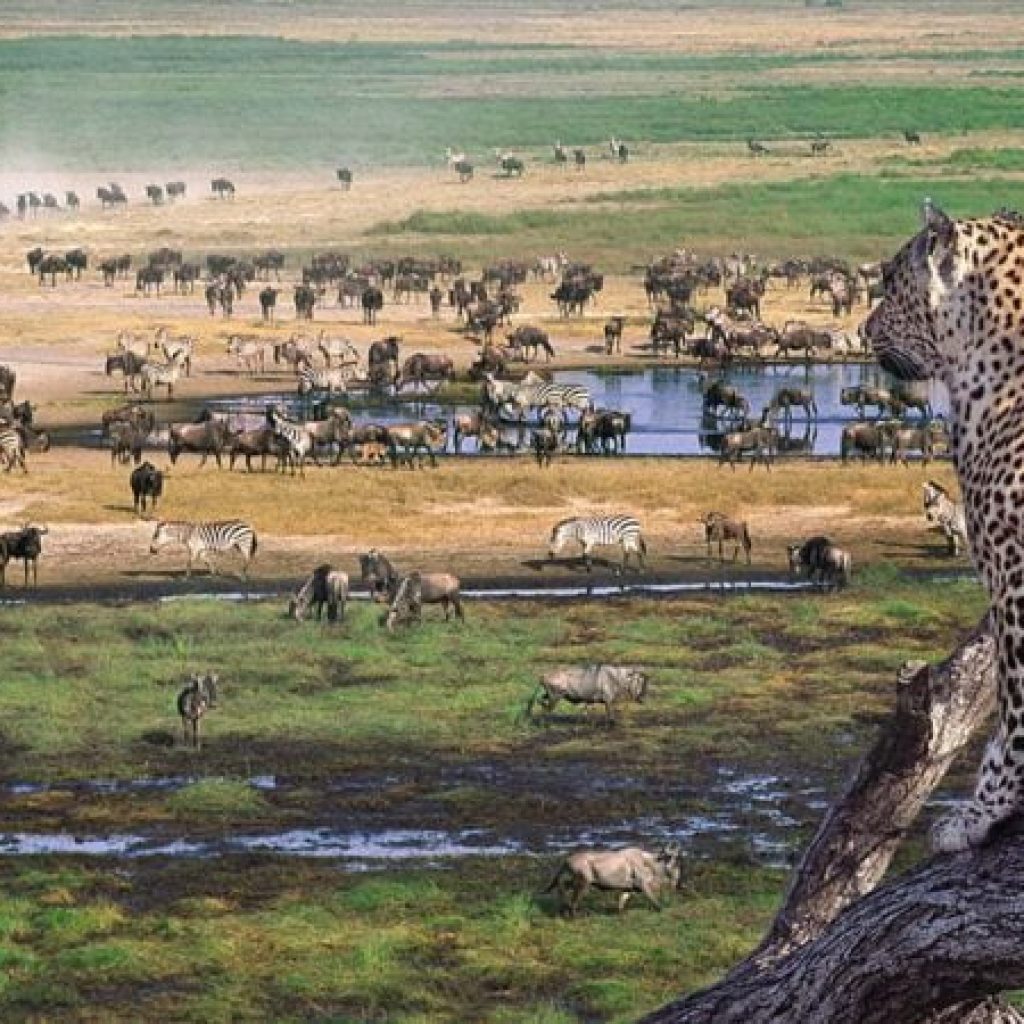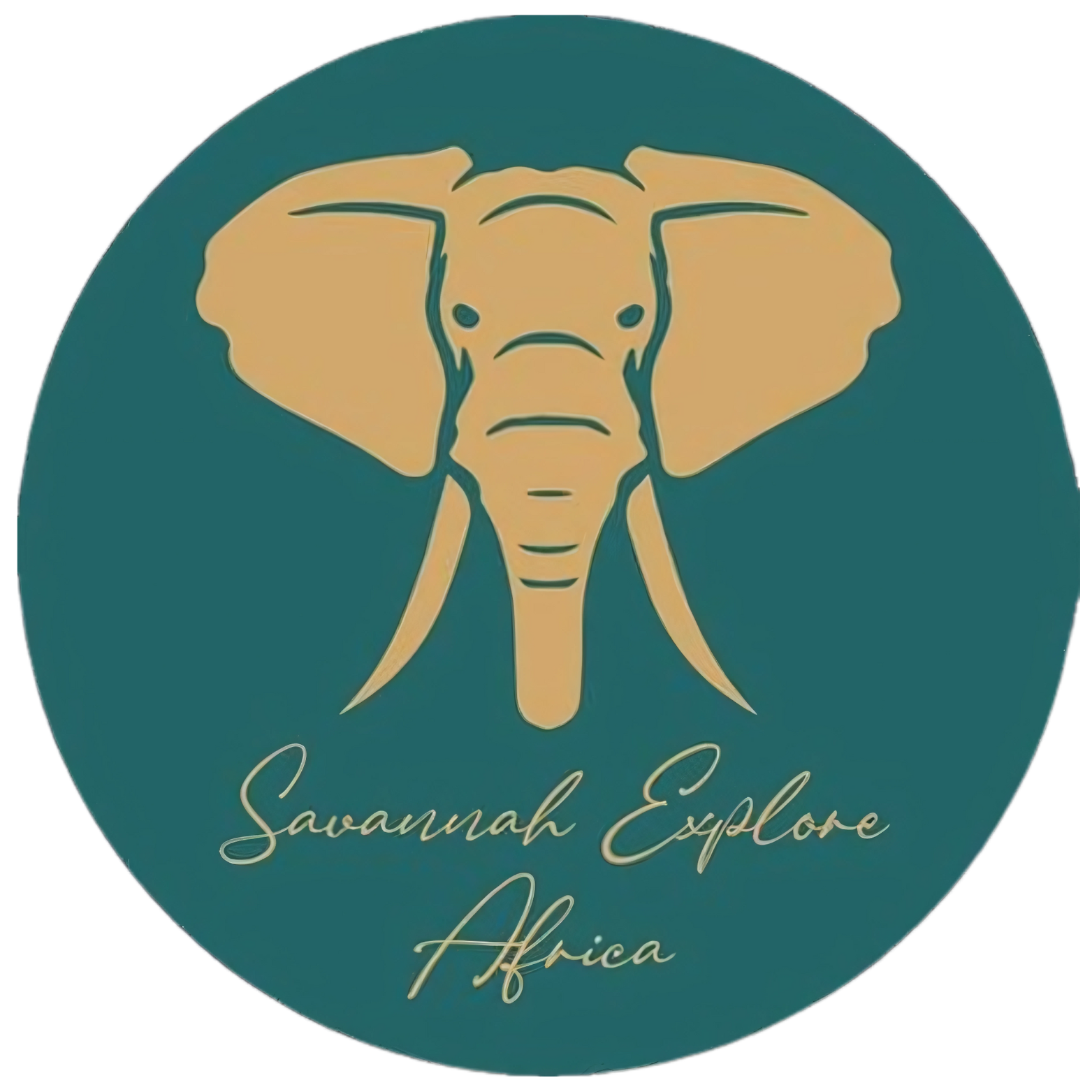Ngorongoro Crater
Conservation Area
Wildlife Encounters
Ngorongoro presents an astounding array of wildlife and diverse ecosystems, encompassing grasslands, swamps, forests, and saltpans, as well as lakes. Inside the crater itself, you’ll find approximately 25,000 larger animals, predominantly zebras and wildebeests. Notably, this is the prime location in Tanzania to observe black rhinos, along with majestic black-maned lions. The soda lake on the crater floor is adorned with vibrant flamingoes and various waterfowl.
Over 100 bird species, distinct from the Serengeti, have been identified within the crater. The spectrum of wildlife extends to leopards, cheetahs, hyenas, elephants, warthogs, impala, buffaloes, hartebeest, eland, reedbuck, and Thompson gazelles.


Activities to Partake in
Much of the action unfolds within the crater itself, offering opportunities for birdwatching, photography, walking safaris, and game viewing. The park’s headquarters can be found at Park Village in Ngorongoro Crater, which also serves as an information center.
For the adventurous, trekking expeditions can be arranged to explore the volcanoes of the Crater Highlands, starting from Ngorongoro Crater. Olduvai Gorge, a canyon stretching about 50 kilometers in length and up to 90 meters deep to the northwest of Ngorongoro, holds archaeological significance.
This site bears witness to the remarkable discoveries made in 1959 by Mary and Louis Leakey, including the 1.8 million-year-old Australopithecus Boisei skull. The dry season from June to August is considered the optimal time for visiting Ngorongoro.
Wildlife in Focus
Today, the Ngorongoro caldera stands as one of the most captivating wildlife sanctuaries on the planet. The animals within are not confined by the crater walls; they stay willingly due to favorable conditions. The grassy crater floor dominates, attracting a variety of grazers like wildebeests, zebras, gazelles, buffalo, eland, and Coke’s hartebeest, along with warthogs.
This lush pasture and the presence of permanent water support a resident population of 20,000 to 25,000 large mammals. The swampy areas and forests provide additional resources for hippos, Tanzania’s last black rhinos, waterbucks, giant-tusked elephants, reedbucks, baboons, bushbucks, and vervets. The steep inner slopes offer a habitat for dik-dik and the rare mountain reedbuck.
The crater walls are adorned with towering euphorbias, while the forested areas on the floor provide shade for a mesmerizing array of creatures. These animals, in turn, sustain a thriving predator community, including lions, leopards, as well as scavengers like hyenas and jackals. For optimal viewing and photography, approach these animals slowly and quietly, and stick to designated tracks.
Birdlife in Ngorongoro Crater
Birdwatching in Ngorongoro is influenced by the season, as it hosts both resident and migrant bird species. Resident birds like ostriches, bustards, and plovers can be spotted year-round. During the wet season, European migrants such as White Storks, swallows, and Yellow Wagtails share the Crater with the residents, arriving from November through May, coinciding with the African rains and Eurasian winter.
Local migrants like flamingos, storks, and ducks frequent the area based on the condition of the lake and ponds. Among the other avian species you may encounter are Stonechat, Schalow’s Wheatear, Anteater Chat, and Fiscal Shrike. Raptors, including Augur Buzzards and Verreaux’s Eagles, find their home in the Crater. Ngorongoro Crater safari lodges are perched on the crater rim, at an elevation of 2,235 meters (7,264 feet) above sea level. While it can be chilly at this altitude and quite cold at night during the winter months of June to August, the crater floor experiences contrasting heat during the day.


Best Time To Visit
Rainy Season in Ngorongoro Crater Conservation Area Safari
The rainy season spans from November to May, with the long rains typically falling in April and May. The amount and timing of rainfall can vary, and a dry period in January and February may interrupt the rainy season, creating short and long rains.
The eastern slopes, due to their elevation, receive more rainfall compared to the arid western region. Rainfall usually arrives in the form of afternoon and nighttime storms, cleansing the air and revealing clear vistas. The dry season, characterized by low rainfall, prevails from June to November, with July being the coldest month and highland temperatures occasionally dropping below freezing.
Exploring the Ngorongoro Crater Safari Floor
Guided game drives through the lush plains and forests of the crater floor provide visitors with a deeper understanding of the people and wildlife in this natural wonder. The prominent feature of the crater floor is Lake Magadi, a shallow soda lake known for hosting large flocks of flamingos. Much of the crater floor consists of open grasslands, making it relatively easy to spot animals like black rhinos, lions, wildebeests, hyenas, gazelles, and zebras.
Lodges and hotels around the Ngorongoro Crater Conservation Area. A steep dirt road descends from the Malanja Depression on the crater rim to the crater floor. At the road’s summit, Masai women and children often allow tourists to photograph them for a small fee.
The hippo pool near Mandusi Swamp serves as a popular picnic spot. The Malanja depression features open grasslands and provides an ideal environment for spotting highland antelopes like mountain reedbuck and Kirks, dik-dik, along with various bird species, including the striking augur buzzard and Schalow’s Wheatear.
Trending Safaris
Tailor-made itineraries
for every traveller
We’re excited to take you on a journey to experience sights and sounds found nowhere else on Earth. Unique scenery, wildlife and cultures are waiting to be revealed, and we at Savannah Explore Africa can’t wait to share them with you. Our custom designed journeys are intended to inspire but can be tailor made to suit your every need. It’s time tolet your safari dreams run wild.
Let Us Plan Your Dream African Trip


Enquire now and a Travel Expert will get
back to you.
Subscribe to Our Newsletter
Join Our Monthly Newsletter, stay in touch and travel when ready
